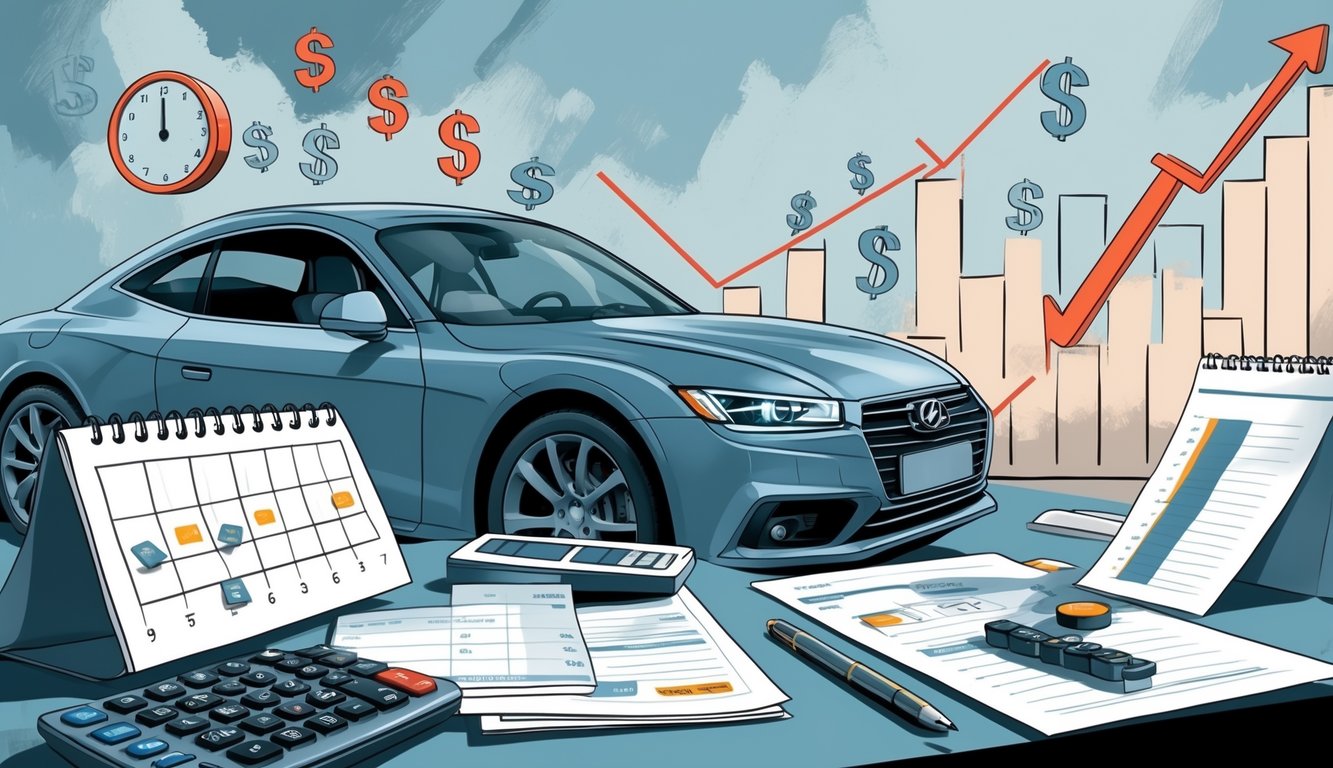
Okay, so here’s the thing that keeps bugging me: car dealers act like payment deferrals are this stress-relief hack, like, “Hey, just skip a few months, you’ll be fine!”—but then nobody circles back to explain the mess you’ll step into later. I actually cornered a Wells Fargo loan officer (Pennington branch, July 2024—nice guy, way too honest), who just shrugged and said, “Deferrals tack on more interest, plain and simple.” So I did the math myself—yeah, three skipped payments on a $32,000 loan at 6%? That’s over $500 extra, according to CFPB data. Wild. Here’s the kicker: your payment stops, but interest just keeps racking up in the background, quietly merging itself into your principal like some financial barnacle.
My neighbor, total car newbie, did this with her new Kia—nobody spelled it out for her. She took the “payment holiday,” then owed more than before, and the dealership went all “who, us?” about it. Jeff Dylan, some advisor always quoted in Automotive News, keeps telling people, “If you don’t add those deferred months into your own spreadsheet, you’ll be shocked at your payoff number.” He’s not wrong. I keep seeing those “wait, what happened?” threads on Reddit—nobody reads the fine print until it bites.
I used to think, maybe banks would eat the extra cost, you know, as a goodwill thing? Nope. That’s like thinking you’ll get authentic pad thai at a mall food court. My dealership literally gave me a pine air freshener as a “bonus” for deferring payments. As if that covers the extra interest. (Spoiler: it just made my car smell guilty.)
How Car Payment Deferrals Work

I keep tripping over this: everyone’s hyping “relief,” but the reality is, deferrals just get buried under a pile of optimism. Banks toss around “breathing room” like it’s a gift, but in the end, you owe more. Credit unions? “Win-win.” Sure, if you like losing.
Definition and Process
Deferrals look easy. Click a button, skip a bill, no repo guy. But interest? It’s like a hitchhiker you can’t shake. My friend Rick paused three months with Chase, then got slapped with $800 extra interest (CFPB calculator doesn’t lie). You won’t see that on a glossy flyer.
They just push the skipped payments to the end, usually by stretching out your loan term—so you get to keep your beater longer than you ever wanted. Interest keeps ticking up, every single day (Federal Reserve spells it out, but who reads that stuff?). Most contracts let lenders roll that interest into your next bill, so your principal gets fatter. Lenders all have their own tricks, but I’ve never seen one say, “Hey, here’s the real math.”
Eligibility Criteria
Trying to get approved for a deferral? Good luck. Wells Fargo made me jump through hoops just to see their checklist. Not everyone qualifies. You’d think falling behind would help, but apparently, you need to be “in good standing.” Some want proof you lost your job, or even a COVID test (in 2024, really?). Experian’s 2024 review says 22% get denied just for “bad documentation”—feels like a pretext to me.
And here’s the weird bit: FICO score and loan-to-value might matter, but dealers act like it’s a state secret. I met someone who had to send Toyota Financial a hardship letter, got ignored, then just got auto-replies. Nobody mentions that deferral requests can show up on your credit file as “assistance,” which could freak out future lenders. Not saying panic, but, like, maybe don’t trust the TV commercials.
Application Procedures
Trying to apply? Prepare for pain. I’ve spent hours on hold, listening to someone read a script, asking for hardship letters, pay stubs, bank statements (which they lost, twice—seriously). Most make you use online portals now, but last month, Capital One’s crashed unless you used Safari. No standard forms, just a maze.
If you’re trying this, save every email, screenshot every click, and pray. Some servicers “forget” your request until you’re late, then ding your credit anyway. (A Discover supervisor called it a “clerical error”—I call it sabotage.) CFPB says escalate if you don’t get a written answer in five days, but most people just cross their fingers. Usually doesn’t work.
And why do they need a notarized signature when Equifax already knows my old landlord’s middle name? Makes zero sense.
The Hidden Financial Impact of Deferring Car Payments
Honestly, chasing “relief” with a deferral is like buying those midnight miracle creams—feels good for a second, then you notice the price tag. No warning label, just extra fees hiding in the paperwork. Deferrals don’t just push stress down the road; they multiply it, tacking on months, years, and weirdly complicated interest.
Compounding Interest Explained
I wish I got paid every time I forgot that deferred interest keeps growing. I’d have a fancy espresso machine by now. Compounding interest is the real villain here. The CFPB says when you defer, the interest just snowballs.
So, every month you skip? More interest gets added to your principal, like calories sneaking into your diet. My neighbor did a three-month deferral (she swears it was only three), and her final balance jumped $1,073 after nine more months of “just” $245 payments. You’d never spot it unless you squint at the fine print.
Math doesn’t care if you’re broke or sick; compounding just does its thing. Banks know most people miss this. My old finance professor used to rant that it’s the “accrued” interest—not the original—that wrecks budgets.
Extended Loan Terms
Lenders love to say they’ll “extend your term out of compassion.” If that means 76 payments instead of 60, I’ll pass. You won’t find that in big print—just a tiny asterisk. My friend Mark’s 2021 Ford Escape loan ($24k, 5.8% APR): after two deferrals, his payoff date moved 10 months later.
It’s like signing up for a free trial, then getting billed for months because you forgot to cancel. Extended terms mean you’re paying long after your friends are done. Experian’s 2023 report says average loan terms after deferral go up 8–12%. Sometimes you’re still paying when your car’s worth less than the loan.
That sinking feeling when your loan outlasts your warranty? Lenders count on you missing that. I did, for months—the bill just kept getting heavier.
Increased Total Repayment Amount
Here’s what really ticks me off: watching the final numbers balloon, quietly. Deferrals mean you pay way more overall, even if your monthly bill looks “manageable.” Doesn’t matter if you’re with Credit Acceptance, Ally, or Toyota Financial. The true cost? Principal, interest, and all those add-ons you thought were mandatory.
My cousin (CPA, spreadsheet maniac) broke it down for me:
| Months Deferred | Original Payment | Total Interest | Balance After Deferral |
|---|---|---|---|
| 0 | $340 | $3,180 | $17,000 |
| 3 | $340 | $3,850 | $17,950 |
| 6 | $340 | $4,440 | $18,840 |
That’s $1,860 more, just for three “stress-free” months. Kelley Blue Book says it’s even worse when rates are high (2024 hit 7.1%). The payoff creeps up so quietly, you’d think you’re making progress—but you’re not. You just owe more, pay longer, and start wishing you’d kept your old Civic.
